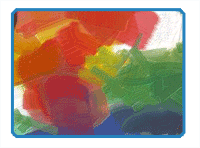
By Matt Fussell
Oil painting first appeared in the world in the fifteenth century early in the Renaissance. It was first used by painters in Northern Europe. Since this time, artists have continued to develop and expand on oil painting techniques.
Like all paint, oil paint is made up of three indredients. Oil paint is made up of pigment, binder, and solvent. Pigment is the color and is usually a powder. The binder in oil paint is linseed oil. The solvent could a variety of things, but most often it is turpentine or mineral spirits. Understanding the properties of the ingredients found in any paint will affect your success when painting with them.
Surfaces for oil paint can be greatly varied. An artist may choose to work on wood, paper or most commonly, canvas. No matter what the surface chosen, it is a good idea to prepare the surface with a coat of acrylic primer-like gesso. Doing this creates an acceptable surface for painting with oil paint. You can buy canvas that has been pre-primed with gesso. Most canvas that has been pre-stretched has also been primed with gesso. Surface texture can affect the marks an artist can achieve. Masonite wood is very smooth producing intricate detail in a finished oil painting. It also allows for easy build-up of the material creating impasto effects. On the other hand, a heavier tooth of canvas requires more paint build-up to create detail. Surfaces chosen by an artist should reflect the subject matter and style chosen to paint.
While there is a wide variety of brushes used for oil painting, stiff hog bristle brushes are most commonly used. Because oil paint is generally thick, the stiffness of the bristle brush is better able to hold it's form. Brushes are produced in a variety of shapes and sizes. Flat brushes have longer fibers that are squared off on the end, while bright brushes have shorter fibers. Bright brushes are also squared off. Filbert brushes are flat and rounded at the tip. Round brushes come to a point at the tip. Fan brushes are flat and "fan" out at the tip. Pallette knives are also widely used for applying paint and mixing.
Because oil paint uses an oil binder, it takes quite a while to dry completely. This can both be an advantage and a disadvantage. It is advantage when the artist wants time to "work" the paint on the surface over a period of time or mix colors directly on the surfac
e. It is a disadvantage when the artist wants to quickly layer the paint or paint over an area with a completely new color.
Impasto- Impasto is a painting technique in which a three-dimensional texture is created by building up thick layers of paint. This is quickly accomplished with oil paint by using a palette knife.
Underpainting- An underpainting is a monochromatic painting in which subsequent layers of paint are added. The layering of the paint create creates complex colors and values.
Scumbling- This technique involves putting an opaque layer of color over a previously dried layer of color. Then using solvent, a knife, or brush to remove the top layer of paint revealing the color underneath.